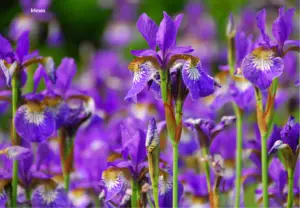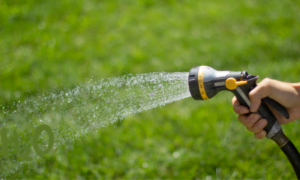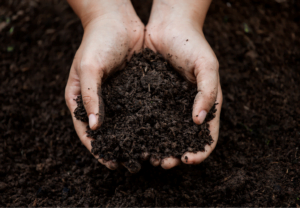
The center of the human eye is called the iris. Even the Irish flower
preserves the royalty of the garden. I grow Irish flowers in my garden. Which makes my garden royal. Irish flower is named after the Greek goddess Irish. It is called the rainbow goddess. This is known as Hera’s message. The Irish are called the eyes of heaven. Its botanical name is Iris Germanica. There are more than 70,000 varieties and 300 species.
Their height is 20-40 inches. The flowers are 7-8 inches wide. Irish is available almost all
year round, summer and winter. The colors of iris blossoms are diverse. For example: Blue,
Yellow, Orange, Black, White, Purple, Multicolor.
It is widely practiced all over the world including in Europe, Asia, and North America. It is a
tuberous flower. It propagates from tubers or rhizomes. Today I am sharing with you a great
Irish experience. I hope you find success in growing Irish flowers from my blog.
| Name | Dwarf crested iris (Iris crostata) |
| Native Area | Eastern United States |
| USDA Hardiness Zones | 3–9 |
| Flower Color | Blue, yellow, pink, purple, white |
| Height | 6–9 inches |
| Sun Exposure | Partial shade; tolerates full sun |
| Soil | Well-drained |
what is Irish
There is a group of perennials known for their bright flowers. That is Irish. Iris, crocuses,
and gladiolus belong to the same family. Irish is popular as a cut. They form an attractive
structure throughout the year as they are perennials with tall, slender stems and spear-like
green leaves
Type of irises
Some of the 300 species of Irish flowers are very popular. It is mentioned below:
Bearded Iris (Iris germanica)

This is the most attractive and fragrant
species of iris. It has a distinct shape. Colors for bearded irises are varied..
They are up to 3 feet tall. It divides the season into three parts. Iris flowers in the early
season, mid-season, and late season. That is why they are known as long-lasting
displays. Some irises bloom in summer and some irises bloom in autumn.
Siberian Iris (Iris sibirica)

They are blue, white, and purple. Their
leaves are long and sword-shaped. Grows easily in moist soil.
Japanese iris: These flowers are prized for their variety of bright colors. Its height
is 4 feet. They grow well in moist and acidic soil.
Dutch Irish
Before planting this Irish, the soil should be well drained to get a
good yield. They have long, narrow stems, pointed, star-shaped. It is blue, purple,
white, and yellow.
Louisiana Iris

These are found in the southeastern United States. It has different
types of flowers. Each flower is colored in a different color. Red, purple, blue, white.
Copper Irish, dixie Irish, zigzag Irish, and Irish nelson are flower types. They grow
in moist soil and grow up to 4 feet tall
Irish Douglasiana
These flowers grow along the Pacific coast of North
America. Blue, purple, and yellow flowers bloom in summer. Their diameter is 3 inches
and their stem height is 2 feet. Douglasiana Iris flowers are bright and easy to care for.
So it is very popular for gardens.
Spuria Iris (Iris spuria)

This variety is Irish hardy and drought tolerant. It can grow up to 5 feet tall. They
have long and strong stems. Their blue, yellow, white, purple, etc. are attractive in
different colors.
Crested Iris (Iris cristata) –
These irises are found in eastern North America.
Their structure is fine, with blue flowers and low growth. They prefer rock gardens and
shaded areas. Grows in moist soil
Growth habit
Hybrid varieties of Iries are cultivated for the gardener. Different
varieties of Irish grow from different places. The rhizome grows from the bulb. Those
grown from bulbs are Irish hollandica, Irish reticulata, and Irish syria. Their leaves are
long, thin, and sword-like. They usually grow in clumps.
Flowers
Iris flowers have a variety of colors. , like purple, red, yellow, blue, pink, white etc. Which delight our mind and attract the eye. Iris has six petals like a
flower. The three petal sections are called standards. Three hanging petals are called
waterfalls.
Leaves
Iris leaves are 3-4 inches long. Their color is green or bronze.
They are often grown for leaves as well.
Bloom Time
Different varieties of Iris are available at different times. Some
varieties bloom in summer and early spring and some bloom during winter.
Hardiness
The hardiness of iris flowers varies with their variety and species. They
multiply quickly and are relatively inexpensive. They are zone 3-9
Landscape Uses
Irish flowers have been cultivated for centuries. They are
popular in garden crafts as well as used in a variety of applications. Such as mixed borders,
in any design, massing, or accent. Used as a cut-in flower arrangement.
Economically
The Irish are in great economic demand in the world. Butterflies and hummingbirds abound
due to their fragrance and beauty. Irish flower pairings in screenplay and literature.
Irish Flower Care and Growing
Learn some tips for growing and caring for Irish flowers
Light

Plant the iris in a location that receives adequate light. They like to stay in maximum
sunlight for 6-8 hours a day. Some varieties prefer more light and some varieties prefer less
light plant it in high light when transplanting as it grows from rhizomes. I planted it like this
in the roof garden. Plant the Irish rhizome on a bit of soil to prevent the roots from rotting.
Only the roots will be covered. Planting these flowers in a south-facing window gives good
yield. Applicable for west-facing balcony.
Water

Since these flowers need more light, they will need more water. The more light the iris
absorbs, the more the soil dries out, hardens, and shrivels. So I water every morning and
afternoon to keep the plants from rotting.
Soil

Irish should have well-drained soil and be planted in full sunlight. 12-16 inches deep loosen
the soil and add compost to the top 6 inches.
Temperature and humidity

Siberian iris flowers are drought-tolerant and hardy in structure. So they don’t like summer.
Their temperature is 18-23°F.
Some varieties bloom in summer. They are cold-tolerant and planted in the west. Their
temperature is 30-40 °C
Fertilizer

Balanced fertilizers are most commonly used for Irish flowers. Nitrogen, phosphorus,
potassium, compost fertilizers, etc. are used. A handful of compost is added to the soil
every day.
Lay off
Weeds should be cleaned around the plants. Care should be taken to avoid any
disease. If the stems and leaves are big, they should be licked. And to save
propaganda
Irish flower is propagated by rhizome division and seed. Overgrows from rhizomes.
After cutting these out, distribute them to your pals. And separate the roots. If something rots or
is attacked by spiders, throw it away
Medicine
Irish flower is a type of herb. Its tubers are very useful for blood and lung diseases. Their
fluoride is beneficial for children’s teeth. They clean the water and consume the polluted
material of the reservoir as food
Conclusion
The Irish flower cultivation method is straightforward. It can be planted in any condition. Due to its
different colors, these flowers can make everyone attractive. It does not require much care.
If you want, you can plant it outside your house, in the window, or on the balcony facing west
to get light

